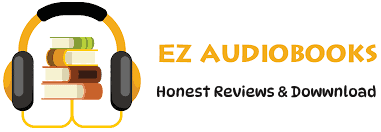Audiobook Sample
Listen to the sample to experience the story.
Please wait while we verify your browser...
- Title: Anatomy of the Human Body, Part 1
- Author: Henry Grayson
- Narrator: Various Readers
- Length: 11:58:00
- Version: Abridged
- Release Date: 01/01/2011
- Publisher: LibriVox
- Genre: Science & Technology, Biology & Chemistry
- ISBN13: SABLIBX978069
Henry Gray’s ‘Anatomy of the Human Body, Part 1’ is a monumental work that has stood the test of time, and the LibriVox audiobook version offers a unique opportunity to engage with this classic text in a new format. As someone who has spent years exploring the intersections of literature and science, I found this audiobook to be a fascinating journey through the early 20th-century understanding of human anatomy.
**Initial Impressions:**
The audiobook begins with a clear and concise introduction by Laurie Anne Walden, setting the stage for the detailed exploration of embryology and osteology that follows. The decision to use various narrators adds a dynamic element to the listening experience, as each voice brings a different tone and pace to the text. This variety helps to keep the listener engaged, especially when dealing with the more technical sections of the book.
**Personal Connection:**
Listening to this audiobook reminded me of my time as a visiting professor in Tokyo, where I had the privilege of teaching a course on the evolution of scientific literature. One of the key discussions we had was about how different mediums affect the way we understand and interpret scientific knowledge. This audiobook serves as a perfect example of how the spoken word can bring new life to a historical text, making it accessible to a broader audience.
**Analysis of Key Themes and Content:**
The audiobook is divided into two main sections: Embryology and Osteology. The embryology section provides a detailed account of human development from conception to birth, offering a chronological sequence of events that is both informative and engaging. The osteology section, on the other hand, focuses on the skeletal system, providing comprehensive descriptions of individual bones, their structure, and their relationships to surrounding tissues.
One of the strengths of Gray’s work is its meticulous attention to detail. The descriptions are thorough and precise, making it an invaluable resource for anyone interested in anatomy. However, it is important to note that this edition reflects the anatomical understanding of the early 20th century. While the foundational knowledge remains relevant, some information may have been updated or refined in light of modern research.
**Narrator Performance and Audio Quality:**
The various narrators do an excellent job of bringing the text to life. Each narrator brings a unique voice and style to their section, which helps to maintain the listener’s interest. The audio quality is generally good, although there are occasional variations in volume and clarity, which is to be expected with a project of this nature. Overall, the narration enhances the listening experience, making the complex subject matter more accessible.
**Strengths and Limitations:**
One of the key strengths of this audiobook is its accessibility. By making this historical text available in audio format, LibriVox has opened it up to a wider audience, including those with visual impairments or those who simply prefer auditory learning. However, the lack of accompanying visuals can be a drawback, especially when dealing with detailed anatomical descriptions. The inclusion of illustrations on bartleby.com is a helpful complement, but it does require the listener to switch between listening and viewing.
**Comparison with Similar Works:**
Compared to modern anatomy textbooks like Netter’s Atlas of Human Anatomy or Grant’s Atlas of Anatomy, Gray’s work is more historical in nature. While modern atlases prioritize visual representation and clinical relevance, Gray’s Anatomy offers a comprehensive and detailed textual description of anatomical structures. This makes it a valuable resource for understanding the evolution of anatomical knowledge, though it should be supplemented with more recent resources for a complete and up-to-date understanding.
**Recommendations for Potential Listeners:**
This audiobook is ideal for anyone with an interest in the history of medicine, anatomy, or scientific literature. It is particularly well-suited for students and educators who are looking to explore the historical roots of anatomical knowledge. However, those seeking the most current information on human anatomy may want to supplement this audiobook with more modern resources.
**Personal Reflection:**
Listening to this audiobook was a rewarding experience that deepened my appreciation for the history of anatomical knowledge. It reminded me of the importance of preserving and disseminating historical texts, and how different mediums can bring new perspectives to old knowledge. I look forward to exploring the subsequent parts of this series and continuing my journey through the fascinating world of human anatomy.
With scholarly appreciation, Prof. Emily Chen
Prof. Emily Chen

